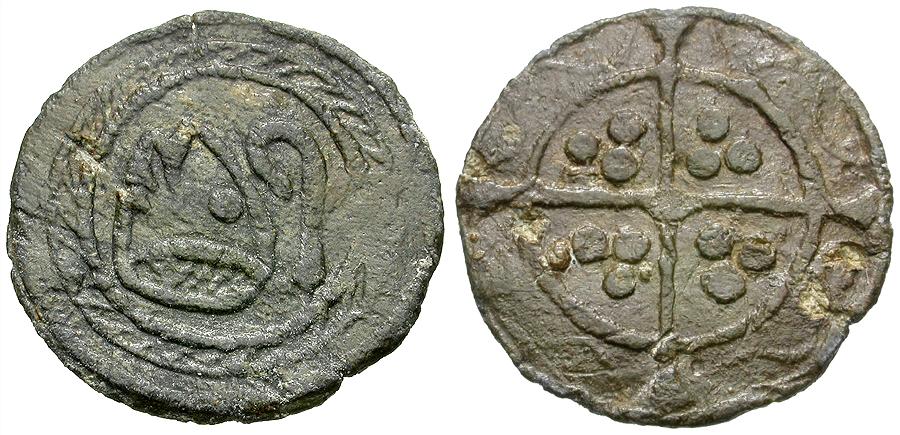








|
| England. House of Tudor. Mary - Edward VI (1553-1558). St. Nicholas 'Boy Bishop' PB Token |
$235.00 |
 |
 |
| sold |
|
Attribution: Mitchiner & Skinner II, group Ra, 1 - Cast in East Anglia at Bury St. Edmund’s
Date: 1553-1558
Obverse: Mitre, croizer to right; all within decorated border
Reverse: Long cross pattée with trefoils in angles; scrollwork border
Size: 26.61mm
Weight: 6.06 grams
Rarity:  5 5
Description: VF-XF, tag states "river Thames find". From the CNG Classical Numismatic Review XIX/3 (1994 Third Quarter), Sp 177 - "Britain in the late middle ages played host to a popular regional variant of the ‘Feast of Fools’ festival. Every year on the feast of St. Nicholas, a boy was elected from among the local choristers to serve as ‘bishop’. Dressed in mitre and bearing the croizer of his office, the young boy paraded through the city accompanied by his equally youthful ‘priest’ attendants. The ‘bishop’ performed all the ceremonies and offices of the real bishop, save for the actual conducting of mass. Though this practice was extinguished with the Dissolution of the Monasteries in 1539, it was briefly revived under Queen Mary, who took particular interest in the festival, when the lucky boy was referred to as ‘Queen Mary’s Child.’ The celebration of the boy bishop died out completely early in the reign of Elizabeth.
Evidence of this custom is particularly prevalent in East Anglia, specifically at Bury St. Edmunds. Beginning in the late 15th century, the region produced numerous lead tokens bearing the likeness of a bishop, often bearing legends relating to the festival of St. Nicholas. Issued in sizes roughly corresponding to groats, half groats, and pennies, these pieces were undoubtedly distributed by the boy bishop himself, and were likely redeemable at the local abbey or guild for treats and sweetmeats. Considering the endemic paucity of small change in Britain at the time, it is likely that, at least in parts of East Anglia, these tokens entered circulation along with the other private lead issues that were becoming common."
| |
|





